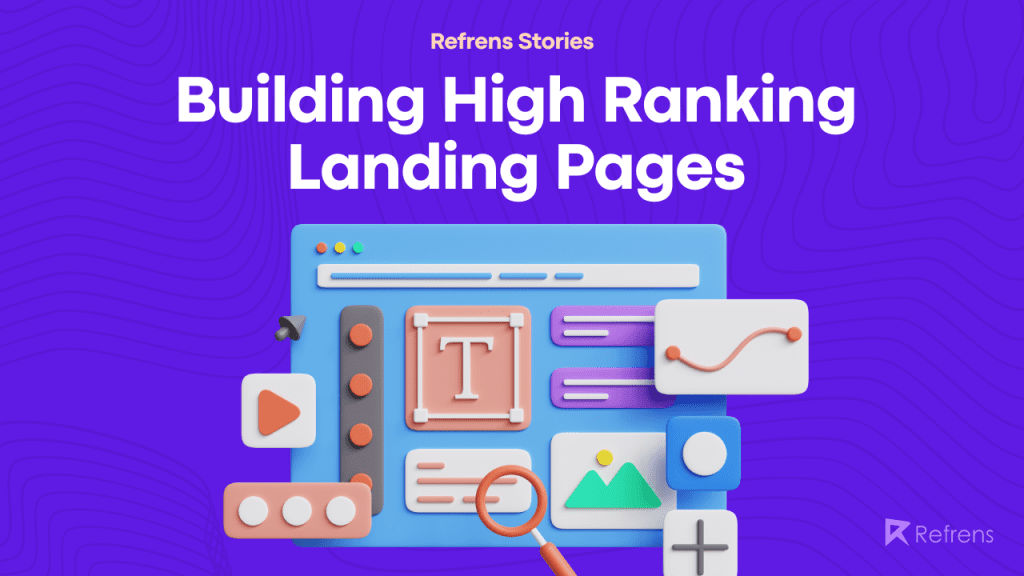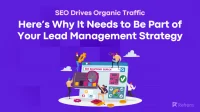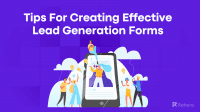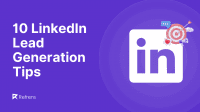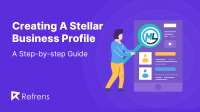“I once asked 4 different industry experts what works in SEO, and everyone gave different answers.” a colleague shared.
SEO is like magic for starters, and confusing even for experts. To solve this puzzle, I decided to sit down with our SEO team to understand how we approach SEO.
Refrens currently ranks no. 1 for 150+ keywords on Google, is on the 1st SERPs for 800+ keywords globally, and has 23.8K+ backlinks. We are also getting offered as high as $400 for giving out a backlink.
If you look at these numbers objectively for a 3-year-old startup, this might not seem that impressive. But if you consider that Refrens competes with giants like Zoho, Freshbooks, Quickbooks, Adobe, Upwork, Fiverr, etc. for the same keywords, this is damn impressive, to say the least.
For Naman Sarawagi & Mohit Jain – the co-founders of Refrens – SEO wasn’t a new challenge; They had scaled their previous venture FindYogi to 2 Mn monthly active users by successfully leveraging SEO.
But Refrens has become a different ball game for us. We have to compete with decades-old billion-dollar incumbents for the same keywords. Nonetheless, for many keywords, we were able to out-rank companies like Zoho within the first 6 months of concentrated efforts in SEO.
So, how did we get there? What processes do we follow? What tools do we use? We hope to answer some of these questions to give you some insights into what worked for us.
Firstly, let’s understand the process we follow while creating a landing page.
7-steps to build high-ranking landing pages
Your landing page is a potential customer’s first point of contact with your product. Its effectiveness can either make or break your acquisition metrics.
At Refrens, we follow a 7-step process while creating a landing page. We would also emphasize that this is an ever-evolving process, and you need to keep experimenting every day. Keeping that in mind, let’s get into the details.
1. Find a niche keyword
If you are just getting started, start with niche keywords with less competition. They are easier to rank on as Incumbents don’t care about them. You can use a keyword research tool and this Attrock list of Ahrefs alternatives helps you choose a good tool.
2. Optimize the h1 & subtitle
H1 & subtitle are basically the first few lines someone would see when they search for your product on google.
The key is to make this copy both SEO worthy and also click-worthy. If you write a cool copy that doesn’t show up on the 1st search page, it is useless. Also, if you write a super-optimized text that nobody would even click on, it won’t benefit you even if it’s on the 1st page.
3. Provide value
A landing page that doesn’t give users what they want, increases your bounce rate and hampers your ranking.
When you are a company like us offering SaaS tools to users, the first dilemma you face while creating a landing page is – should you ask users to sign up before using your product OR should you let them use the product before signing up?
We experimented a bit to solve this puzzle, and ultimately the answer was to identify the user intention. If the user is searching for top accounting software, a typical copy-heavy landing page should do. But if the user is searching for a tool to create an invoice, a landing page with a built-in invoicing tool should work better.
4. Build trust
SEO can only bring people to your page, it won’t make them stay without a good copy, thoughtful onboarding, and some social proof. This is important because if your visitors don’t stay on the page long enough, it can affect your ranking.
Adding ratings, reviews, and media features if any, help you build that trust.
5. Add FAQs
FAQs are a simple yet smart thing to do for 3 reasons:
- They answer user queries about your product
- Give you more real estate on the search page, and
- Provide additional visibility in the “People also ask” section.
6. Multiple landing pages – yes or no?
If your product is used differently by different target audiences, consider creating multiple landing pages.
For example, depending on which country a user is in, we change the default currency and tax type. This saved additional efforts from the user’s side and also made the landing page look more customized for their specific needs.
Additionally, we can also incorporate other customization features such as displaying relevant information about the user’s location, industry, or interests. This personalized approach enhances user experience and can be further complemented by Wikipedia page creation for the user’s business or organization, which adds credibility and visibility to their online presence.
7. Inter-linking
“I can’t emphasize this enough,” Says Vishwajith from our SEO team, “…I feel that backlinking is the most overhyped concept, while interlinking is the most underrated one. In fact, I would go as far as completely skipping backlinking while starting out.”
If you have a page that already ranks, you can drastically improve the ranking of other pages with interlinking. Basically, It’s like standing on the shoulders of the giants. “But do this carefully,” Warns Vishwajith, “If your central page goes down in ranking for some reason, it will also affect all the pages interlinked to it.”
Tools We Use
Having the right tools at your disposal can really help you improve your SEO efficiency. There are a set of tools that we use on a frequent basis and would definitely recommend using them.
- Google Keyword Planner, UberSuggest: for initial stage keyword planning
- Ahref/SEMrush: for advanced keyword research, competition analysis, position tracking, keyword gap analysis, etc.
- ScreamingFrog: for site audit
- Kewywordtool.io, KWfinder: for keyword research
- Google WebMaster (Search Console): for page indexing, site mapping, web vitals, average position tracking, etc.
- Google Analytics: for user insights, and tracking page views, bounce rate, etc with embedded analytics capabilities
- PageSpeed Insights/ GT Metrix: for page speed analysis
- LinkStorm: for internal linking audit
- Trustmary: To embed Google reviews to website.
Content We Follow
When it comes to SEO, learning is never done. You have to keep learning and experimenting. Here are some resources we follow to keep us updated:
- Search Engine Journal
- Search Engine Land
- SparkToro
- Google Search Central
If you are a beginner, Backlinko, WsCube Tech, Neil Patel, and Google Search Central have great content to help you get started.

